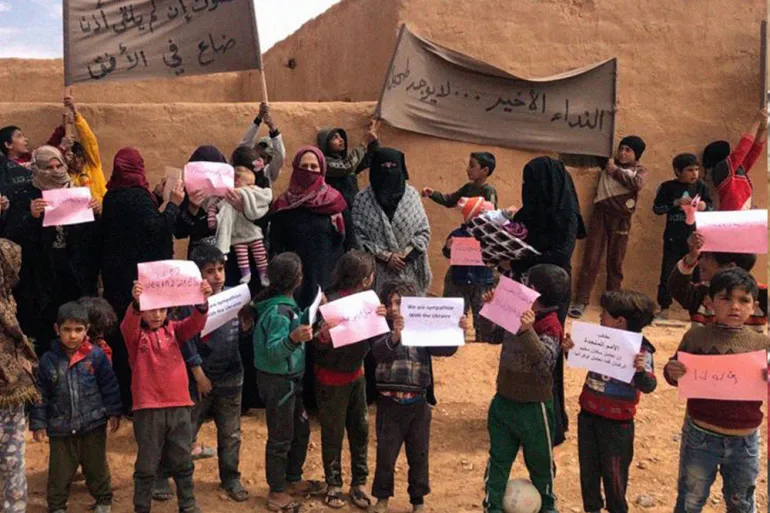Syrians struggle to survive in ‘no man’s land’ desert camp
‘Deterrence’ is a condition in the Kingdom of Saudi Arabia that has been forged with the help of a child’s shield, including living in a desert.

19 May 2022
The Syrian government and its Russian backers have tightened their blockade on Rukban camp, a makeshift settlement housing about 10,000 internally displaced Syrians in the arid “no man’s land” between the Jordanian, Iraqi, and Syrian borders.
Nearly 80 percent of the camp’s residents are women and children, living in squalid conditions. For more than three years the al-Assad regime has blocked United Nations aid from entering the camp, forcing its residents to survive off menial amounts of smuggled-in goods.
“The lack of food is killing us,” said Hamoudi Bader al-Adhab, a resident of the camp who has been stuck there for seven years, and is also a member of the tribal council of Palmyra.
Al-Adhab told Al Jazeera that his wife had recently miscarried her baby five months into pregnancy and that his elderly parents were in poor health conditions.
“There’s literally nothing in the camp. There are no professional doctors. People die and we do not know the cause of death,” al-Adhab said.
The camp sits within a 55km (34 miles) “deconfliction zone” that surrounds the United States’ al-Tanf base, where the US trains its partner forces against ISIL (ISIS) and disrupts the activities of Iranian proxy forces.
US forces are able to patrol the deconfliction zone, alongside Syrian opposition forces, after a deal with Russia in 2016.
However, outside the zone’s perimeters, the camp residents are forced to return to regime-controlled territory, said Mouaz Moustafa, the executive director of the Syrian Emergency Task Force (SETF) which is in direct contact with those in Rukban.
A 2021 Amnesty International report documented the torture, enforced disappearance, and sexual violence dozens of Syrian refugees faced upon their return to regime-held areas.
According to the report, at least 10 individuals who returned from Rukban were detained, three of whom faced torture or ill-treatment, and two were forcibly disappeared. Another 174 returnees were arrested and sent to “terrorism” courts, despite Russian and Syrian government safety guarantees.
“We would rather die here than go back to the Syrian regime,” said al-Adhab.
Unbearable conditions in the camp have now forced out most of its 2019 population of 30,000. But “no matter how desperate they are”, those that remain in the camp are highly unlikely to leave, said Moustafa, and the only option left for these victims of the geopolitical impasse is to plead for help.
“My mother is suffering in front of me and I can’t do anything about it, and my father is about to lose his sight,” Ahmad said. “I cry like a small baby seeking help.”